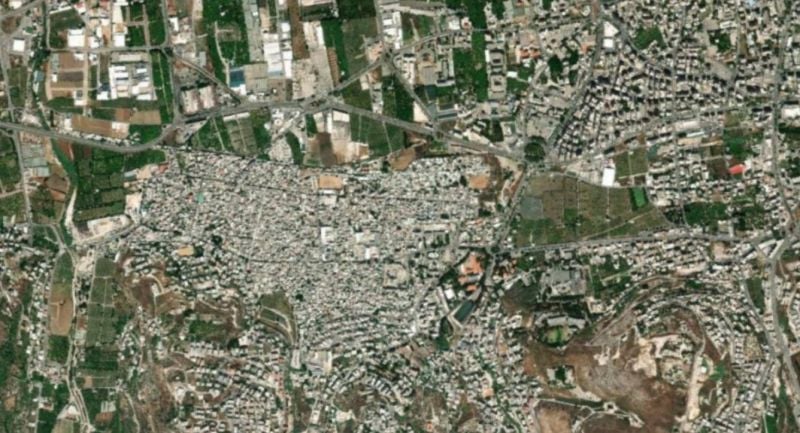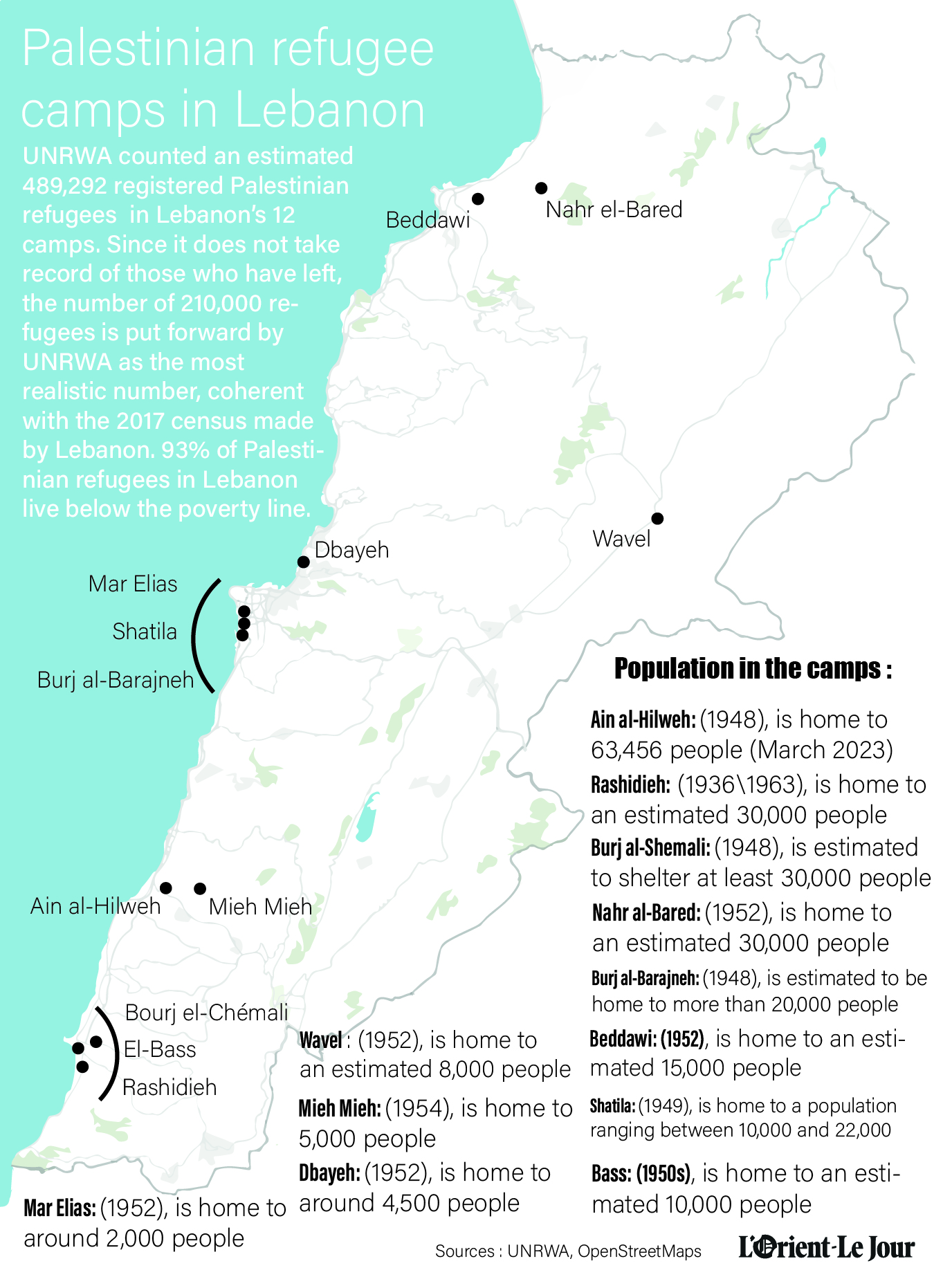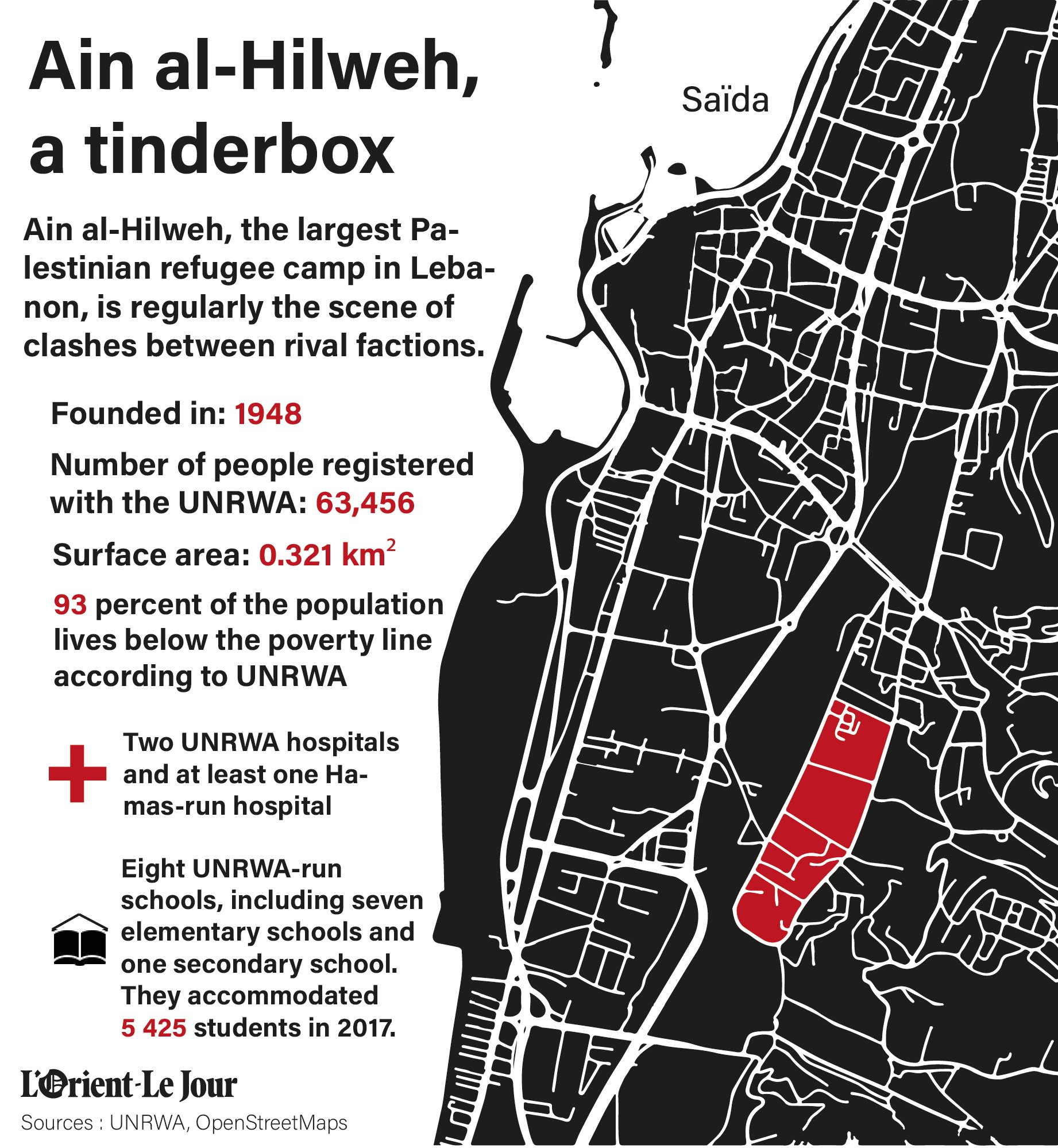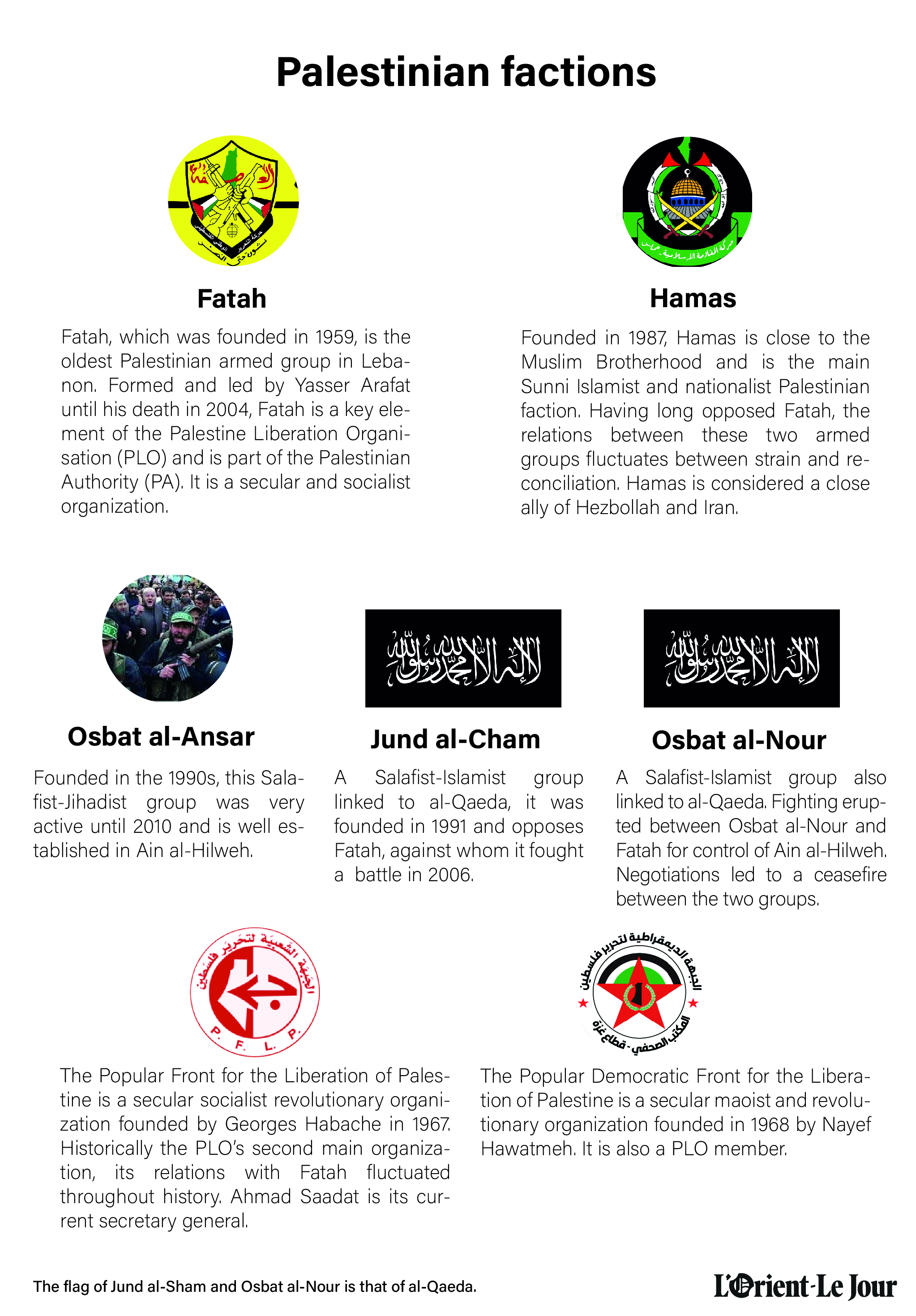
Satellite view of the Ain al-Hilweh camp, in southern Lebanon. (Credit: Maxar Technologies)
Following the clashes that started on July 29 in the Ain al-Hilweh refugee camp in South Lebanon between different Palestinian factions, L’Orient-Le Jour created maps depicting Palestinian presence in the country.
Ain al-Hilweh, located on the outskirts of Saida, is the largest camp in Lebanon.
Under the 1969 Cairo Agreement — which has since been abrogated — the Lebanese army cannot be deployed inside Palestinian camps in Lebanon. Palestinian factions present in the camps are in charge of their security.

UNRWA counted an estimated 489,292 registered Palestinian refugees in Lebanon’s 12 camps. Since it does not take record of those who have left, the number 210 000 refugees is put forward by UNRWA as the most realistic number. Ninety-three percent of Palestinian refugees in Lebanon live below the poverty line.

Ain al-Hilweh has regularly been the scene of clashes between rival Palestinian factions. While some Palestinian camps are unarmed, Ain al-Hilweh serves as a refuge for many armed Palestinian factions with shifting alliances and sometimes competing interests. The clashes during the weekend, which pitted nationalist Fatah movement factions against Islamist groups, attest to this.

This article was originally published in French in L'Orient-Le Jour. Translation by Joelle El Khoury.